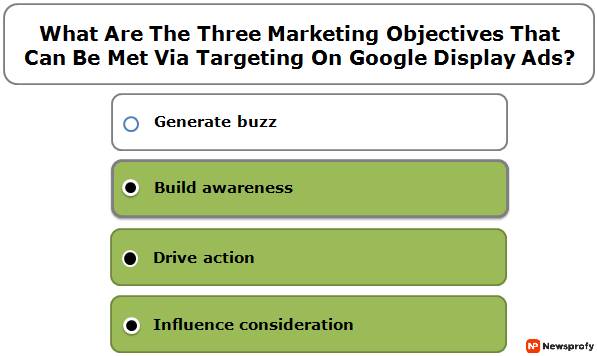What Can You Learn From Attribution Reports?

Question: What Can You Learn From Attribution Reports?
1: The series of steps customers take after completing a conversion, including information on ads, clicks, and other elements of a campaign. ❌
2: The series of steps customers take before completing a conversion, including information on ads, clicks, and other elements of a campaign. ✅
3: Budget usage for all Search campaigns, including limitations and opportunities for more traffic. ❌
4: The number of conversions the same customer completes after clicking an ad. ❌
Final Answer: 2. The series of steps customers take before completing a conversion, including information on ads, clicks, and other elements of a campaign.
What Are Attribution Reports?
Before we tell you what can you learn from attribution reports? Let’s find out what attributing means. You simply do not have enough data if you are not collecting attribution reports. Second, if you’ve been thinking about introducing such reports, don’t put them off any longer. They have been critical to marketing success since 2019.
You’ll never know the actual performance of your ad spend, the breadth of your organic traffic, or how long it takes people to convert if you don’t have attribution data. The list goes on, but the fundamental truth is that you’re blinded until you track data using a mobile measurement partner.
Attribution reports provide insight into a campaign’s performance and allow you to examine that data in a single location. As a result, there is a lot to be learned. You might, for example, compare network performance to click-through rates. Observing retention rates might help you inform re-engagement tactics. Cohort reports might help you better understand user behavior, and you can also use that information to develop remarketing groups.
What Can You Learn From Attribution Reports?-The Explanation
We have already told you what can you learn from attribution reports? In addition, you may learn about customers’ steps from attribution reports before completing a conversion, including information on advertisements, clicks, and other campaign aspects. Attribution reporting displays consumers’ travel pathways to transform and credits the transformation to various advertising, variables, and clicks along the road.
You Learn About Conversion Window.
Your attribution window specifies the time frame within which a publisher can claim that a click resulted in an installation. For example, you have a seven-day attribution window; then, the installation must occur within seven days after the click credits back to that network. Therefore, if that person installs on the eighth day following the last click, it will be categorized as an organic install in your report.
It’s worth noting that if your attribution window is shorter, you’re more likely to notice more organic installations in your report. If you want to learn more, check out how Google ads data-driven attribution gives credit for conversions.
You will See Your Traffic Coming.
Attribution reports offer a precise evaluation of each network’s success, revealing where money was effectively spent and where it was squandered. This is considerably more than simply a count of installations. Understanding which networks influence your KPIs provides another layer of value to attribution reports and helps you to optimize your ad spend.
You’re now in a better position to fulfill your UA and retargeting objectives by looking at the broader picture. Metrics like conversion rates and average daily users may also be displayed in attribution reports. It will allow you to examine the success of each network in greater detail.
You’ll Have More Data On CPC And CTR.
You may utilize these reports to get insight into user behavior and enhance your marketing approach. So, if you are wondering what you can learn from attribution reports, CTR is the place to start. CTR is the ratio of clicks to impressions in a campaign, indicating how many people clicked on an advert vs. how many people saw it.
The conversion from click to install rate compares the number of clicks received by an ad to the number of eventual installations. It is a helpful metric for managing your ad budget. CPC calculates the average cost for each user clicks on an ad, allowing you to plan your budget accordingly. You’ll be able to assess where you stand in contrast to industry averages once you’ve learned these measures for your ad.
Types Of Attribution Models
What can you learn from attribution reports? We have already given you the answer. But, do you know the main types of attribution models you can use in a campaign? Well, there are three types such as;
First Click Attribution
A first-click attribution is an attribution approach that gives the first channel a user clicked through 100% of the credit for a transaction. For example, some buyers convert on their first encounter with a company, but most will have at least two interactions before purchasing.
Last Click Attribution
Last-Click Attribution is a web analytics approach that assigns credit for a sale or conversion to the last click made by the user. For example, if a consumer visits your website and purchases clothes, this attribution model will tell you where the individual came from.
Multi-Touch Attribution
A multi-touch attribution model determines which user touchpoints are the most essential in the customer lifecycle. Several multi-touch attribution models are available to evaluate these touchpoints to cast a strong influence across their purchasing journeys. Using this model, you will get credit for individual touchpoints in an ad that a customer engaged with.
How you will choose an attribution model for your campaign is tricky. You have to evaluate your business goals and marketing plan first. After that, you can determine which model resonates the most with your goals. Finally, the model whose attributing ratio will be the highest will be a good fit for your firm.
Signing Off
We have shared enough details here on what you can learn from attribution reports. However, if you are still thinking of delaying its implementation, your marketing goals will plummet. It will also hamper your overall business objectives. So, we suggest you implement attribution reporting today and add a new edge to your marketing campaign. For further queries, get in touch with us through the comment box.
Additional Reading:












